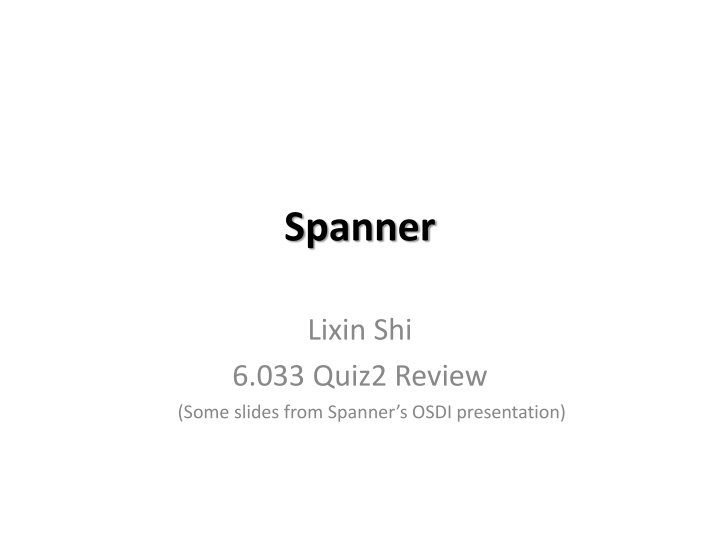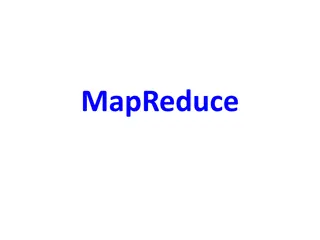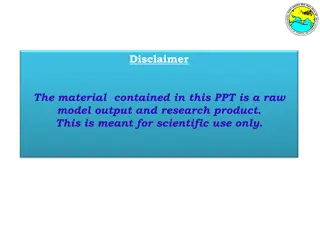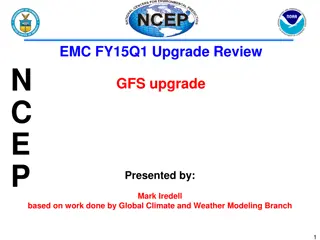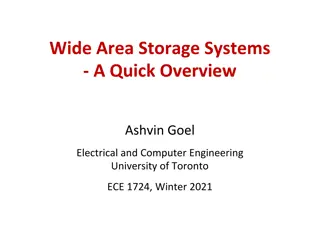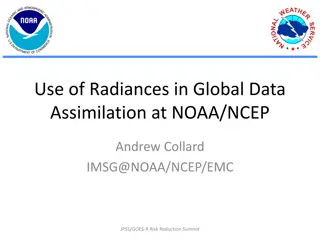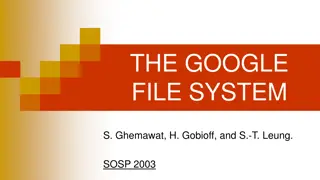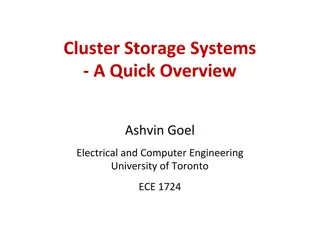Spanner Database Overview
Spanner is a globally distributed database system that offers configurable control, consistent commit timestamps, external consistency, and TrueTime API for handling distributed data. It uses a transaction model with two-phase locking and lock-free reads, providing globally sortable timestamps. The system ensures external consistency by ordering commit timestamps and enforcing a real-world approximation of global wall-clock time consistency. Supported read/write operations include Paxos writes, commit waits, and various read variants to ensure data consistency and reliability.
Download Presentation

Please find below an Image/Link to download the presentation.
The content on the website is provided AS IS for your information and personal use only. It may not be sold, licensed, or shared on other websites without obtaining consent from the author.If you encounter any issues during the download, it is possible that the publisher has removed the file from their server.
You are allowed to download the files provided on this website for personal or commercial use, subject to the condition that they are used lawfully. All files are the property of their respective owners.
The content on the website is provided AS IS for your information and personal use only. It may not be sold, licensed, or shared on other websites without obtaining consent from the author.
E N D
Presentation Transcript
Spanner Lixin Shi 6.033 Quiz2 Review (Some slides from Spanner s OSDI presentation)
Key Points to Remember Major Claims Globally distributed data with configurable control Consistent commit timestamps Consistency Model: external consistency TrueTime API Set of supported read/write operations Paxos write Relaxed read w/wo time stamp
Globally Distributed Data Cross-Datacenter Distribution User Configurable
Transaction Model Two-Phase locking with start/commit Transactional write and lock-free read Globally sortable time stamp with each commit Bounded error between time stamp and wall- clock time start commit t T1: s1 s1: Timestamp
External Consistency If a transaction T1 commits before another transaction T2 starts, then T1's commit timestamp is smaller than T2 A real-world approximation of global wall- clock time consistency start commit start commit t t T1: s1 T1: s1 T2: s2 T2: s2 x s1 < s2 s1 < s2
TrueTime API Global wall-clock time with bounded uncertainty TT.now() time earliest latest 2*
Commit Wait Acquired locks Release locks T Pick s = TT.now().latest s Wait until TT.now().earliest > s Commit wait average average What this gives you: absolute start time < s < absolute commit time
From TrueTime to Consistency Recall: what TrueTime gives you: start commit t T1: s1 s1 needs to be in this range If there are two transactions: start commit s1 < s2 t T1: s1 T2: s2 s1 range s2 range
Supported Read/Write Operations Read-Write transaction Paxos write Commit wait Read transaction with timestamp s Lock-free Every replica tracks tsafe Read from any replica with tsafe >= s Other variants of read Standalone read: read with t.now().latest Read with bounded timestamp
GFS Lixin Shi 6.033 Quiz2 Review (Some slides from GFS s SOSP presentation)
Design Assumption/Facts Hardware fails very often. Large files (>=100MB) are typical. For read operations: large streaming reads + small random reads. For write operations: Record appends are the prevalent form of writing. Need to handle concurrency. Design choice: high bandwidth >> low lantency
Atomic Record Appends Atomic! A few changes from the write algorithm:
